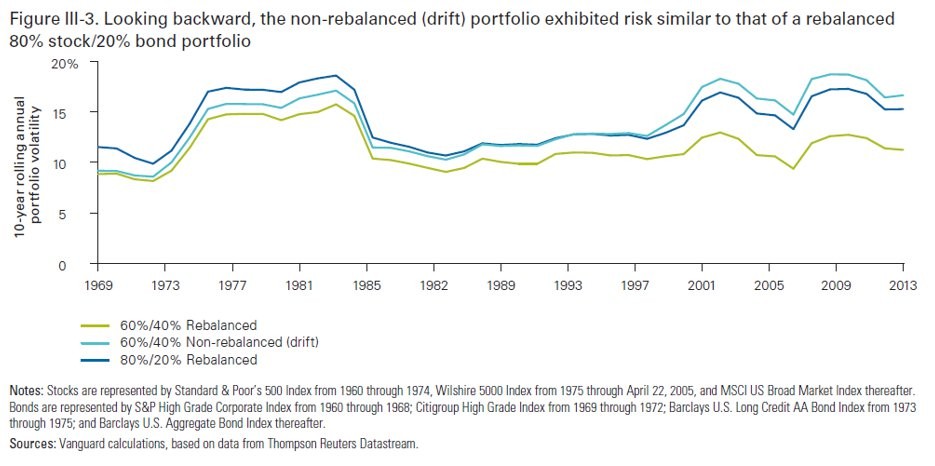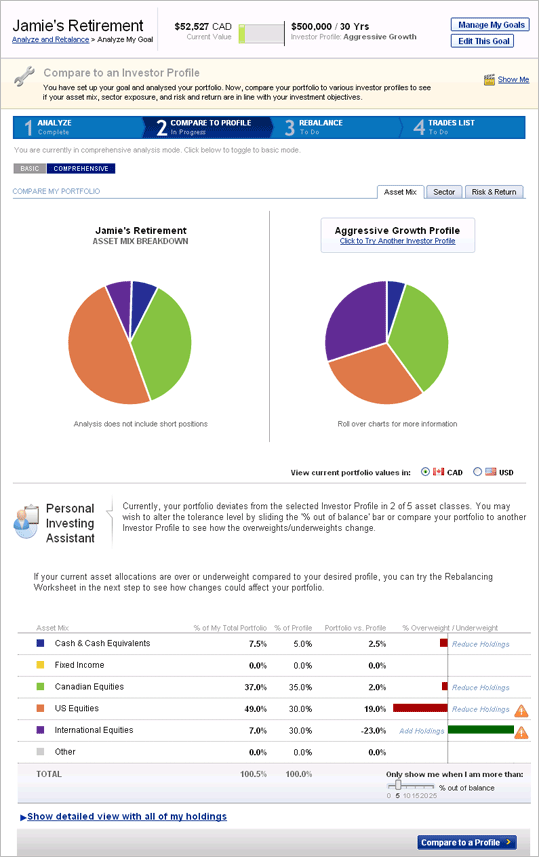Rebalance Your Portfolio To Stay On Track
Post on: 16 Март, 2015 No Comment

So you’ve established an asset allocation strategy that is right for you, but at the end of the year, you find that the weighting of each asset class in your portfolio has changed! What happened? Over the course of the year, the market value of each security within your portfolio earned a different return, resulting in a weighting change. Portfolio rebalancing is like a tune-up for your car: it allows individuals to keep their risk level in check and minimize risk.
What Is Rebalancing?
At the end of the year, Bob finds that the equity portion of his portfolio has dramatically outperformed the bond and Treasury portions. This has caused a change in his allocation of assets, increasing the percentage that he has in the equity fund while decreasing the amount invested in the Treasury and bond funds.
More specifically, the above chart shows that Bob’s $40,000 investment in the equity fund has grown to $55,000, an increase of 37%! Conversely, the bond fund suffered, realizing a loss of 5%, but the Treasury fund realized a modest increase of 4%. The overall return on Bob’s portfolio was 12.9%, but now there is more weight on equities than on bonds. Bob might be willing to leave the asset mix as is for the time being, but leaving it too long could result in an overweighting in the equity fund, which is more risky than the bond and Treasury fund. (Learn more about the relative risk of various investments in Determining Risk And The Risk Pyramid .)

At the end of the second year, the equity fund performs poorly, losing 7%. At the same time the bond fund performs well, appreciating 15%, and Treasuries remain relatively stable with a 2% increase. If Bob had rebalanced his portfolio the previous year, his total portfolio value would be $118,500, an increase of 5%. If Bob had left his portfolio alone with the skewed weightings, his total portfolio value would be $116,858, an increase of only 3.5%. In this case, rebalancing is the optimal strategy.
However, if the stock market rallies again throughout the second year, the equity fund would appreciate more and the ignored portfolio may realize a greater appreciation in value than the bond fund. Just as with many hedging strategies, upside potential may be limited, but, by rebalancing, you are nevertheless adhering to your risk-return tolerance level. Risk-loving investors are able to tolerate the gains and losses associated with a heavy weighting in an equity fund, and risk-averse investors. who choose the safety offered in Treasury and fixed-income funds, are willing to accept limited upside potential in exchange for greater investment security. (Determine your risk tolerance in Personalizing Risk Tolerance .)














